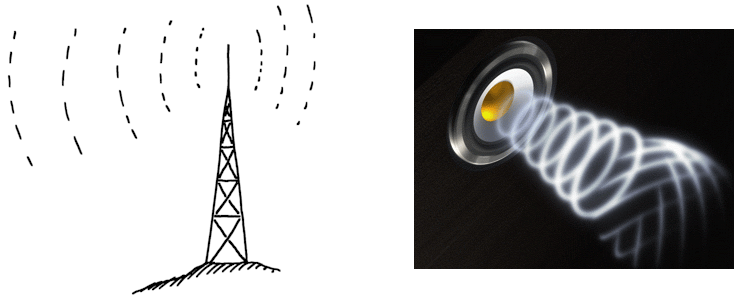Light is simply a name for a range of electromagnetic radiation that can be detected by the human eye. It also travels in a straight line and can't be bent. In the topic light, you can learn three different ways of it bending: reflection, refraction and diffraction.
What is electromagnetic radiation, then?

Electromagnetic energy is a term used to describe all the different kinds of energies released into space by stars such as the Sun. These kinds of energies include some that you will recognize and some that will sound strange. They include:
They all travel in waves, like the waves at a beach or like sound waves, and also are made of tiny particles. Scientists are unsure of exactly how the waves and the particles relate to each other. The fact that electromagnetic radiation travels in waves lets us measure different kind by wavelength or how long the waves are. That is one way we can tell the kinds of radiation apart from each other.
Although all kinds of electromagnetic radiation are released from the Sun, our atmosphere stops some kinds from getting to us. For example, the ozone layer stops a lot of harmful ultraviolet radiation from getting to us, and that's why people are so concerned about the hole in it.
- Radio waves
- TV Waves
- Radar waves
- Heat
- Light
- Ultraviolet Light (this is what causes sunburns)
- X-rays (just like the kind you get at the doctor's office)
- Short waves
- Microwaves (like in a microwave oven)
- Gamma rays
They all travel in waves, like the waves at a beach or like sound waves, and also are made of tiny particles. Scientists are unsure of exactly how the waves and the particles relate to each other. The fact that electromagnetic radiation travels in waves lets us measure different kind by wavelength or how long the waves are. That is one way we can tell the kinds of radiation apart from each other.
Although all kinds of electromagnetic radiation are released from the Sun, our atmosphere stops some kinds from getting to us. For example, the ozone layer stops a lot of harmful ultraviolet radiation from getting to us, and that's why people are so concerned about the hole in it.


 RSS Feed
RSS Feed